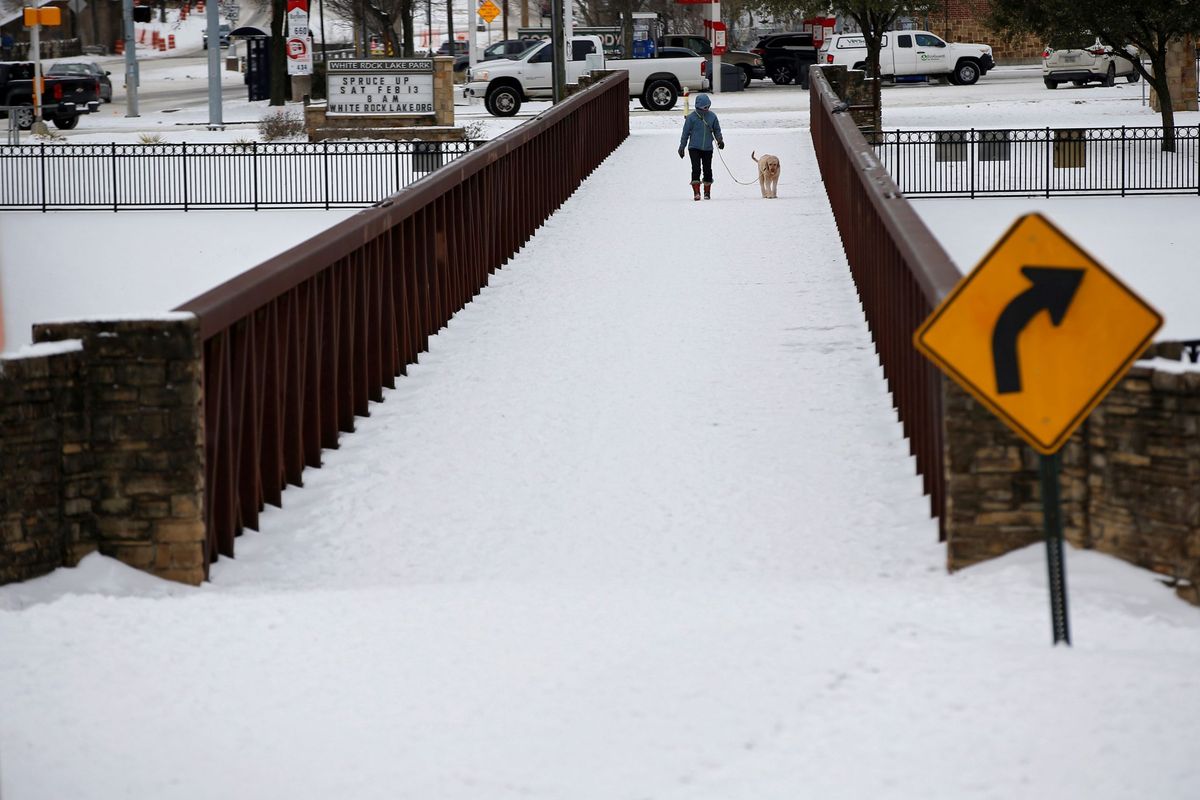The aftermath of the Texas winter storm

A few minutes every morning is all you need.
Stay up to date on the world's Headlines and Human Stories. It's fun, it's factual, it's fluff-free.
At the urging of their governors, President Joe Biden declared major disasters in both Texas and Oklahoma in the days following the storm.
Over Valentine’s Day weekend, Texas saw unprecedented weather as a result of winter storm Uri.
The storm brought with it single digit temperatures and record-breaking snowfall in addition to significant power and water issues for Texas residents.
As temperatures dropped, millions across the state experienced power outages due to high power demands. The blackouts meant that heating systems also stopped working, causing an influx in hypothermia cases and leaving water to freeze in pipes statewide.
But the winter storm will also have lasting effects on the state and the surrounding region for weeks, months and even years to come as damages from the storm are expected to cost up to US$200 billion.
Water and electricity
Busted pipes statewide have led to lingering water issues, leaving almost 400,000 Texans under a boil water advisory as residents try to help each other out where they can. Around 10,000 people showed up to a distribution event to receive bottled water and meal kits, while nonprofits like Matthew 25 ministries have offered laundry services.
“Even though the power is on and the water pressure is normalized, there are thousands of homes and apartments that have been affected because of busted pipes,” said Houston Mayor Sylvester Turner in a press release. “They still do not have water, so there is a tremendous need.”
In the energy sector, the demand for power during the week of the storm for heating purposes was extraordinarily high. Pipes distributing natural gas froze, as did the production of the gas. Those factors, coupled with high gas prices, meant that plant operators who couldn’t turn a profit shut down their facilities.
Nuclear and coal plants also experienced difficulties during the storm and wind turbines froze, but it was ultimately the failure of natural gas that led to the most serious problems. The state saw five times more energy lost due to natural gas’ failure as from wind.
Many Texans also found themselves facing ultrahigh energy bills, with many monthly power bills being more than 10 times bigger than expected for some.
A moratorium was issued by the state Public Utility Commission on disconnections from nonpayment.
“Texans who have suffered through days of freezing cold without power should not be subjected to skyrocketing energy bills due to a spike in the energy market,” said Texas Governor Greg Abbot.
Agriculture industry
According to preliminary data from agricultural economists with Texas A&M, damages to Texas’ agriculture industry was estimated to be US$600 million from the storm, including from damage to crops and the death of livestock.
In addition, grapefruits frozen solid halfway through the harvest season, along with lemons, limes and oranges for which the harvest hadn’t started, were deemed worthless by farmers. The only use for them once frozen was juicing, which was made impossible because the juice-processing plants that might have normally taken them were shut down due to power outages.
Citrus alone accounts for US$230 million of the losses, but that doesn’t include the damage that will be seen over the coming years. Young trees were killed from cold and ice, with the ones that did survive being severely damaged. This will result in smaller harvests in the coming years, while farmers look to replace the dead trees.
Livestock was also hit hard, seeing around US$228 million in damages. Water tanks froze and feedlots ran out of feed, while pastures usually rich with grain for grazing were heavily damaged. Power outages led to heaters in poultry farms, leading to the death of chicks and eggs in hatcheries that won’t hatch. Young calves and lambs froze to death, but the total number is yet to be seen.
Even in states where crops weren’t hit as hard, animals were.
“The wheat isn’t ripe enough to get hurt by [the cold] yet,” Oklahoma farmworker Colton Fiegner told TMS. The “real issues we had were with our cattle,” Fiegner said, adding that his farm had eight cows die from the lack of water, the cold and even from being trampled by other cows trying to stay warm by the hay.
“We had to break ice every morning and afternoon for about a week straight, which is a tough job no matter how you look at it.”
Federal relief
At the urging of their governors, President Joe Biden declared major disasters in both Texas and Oklahoma in the days following the storm. According to a fact sheet from the Federal Emergency Management Agency (FEMA), these kinds of declarations provide “a wide range of federal assistance programs for individuals and public infrastructure, including funds for both emergency and permanent work.”
These declarations come as close to 70 people were reported to have died from the storm throughout the region, generally through hypothermia and the lack of power or water at hospitals. There are also reports of people dying from carbon monoxide poisoning as generators were run indoors and cars were turned on in closed garages as people struggled to keep warm.
Have a tip or story? Get in touch with our reporters at tips@themilsource.com




Comments ()